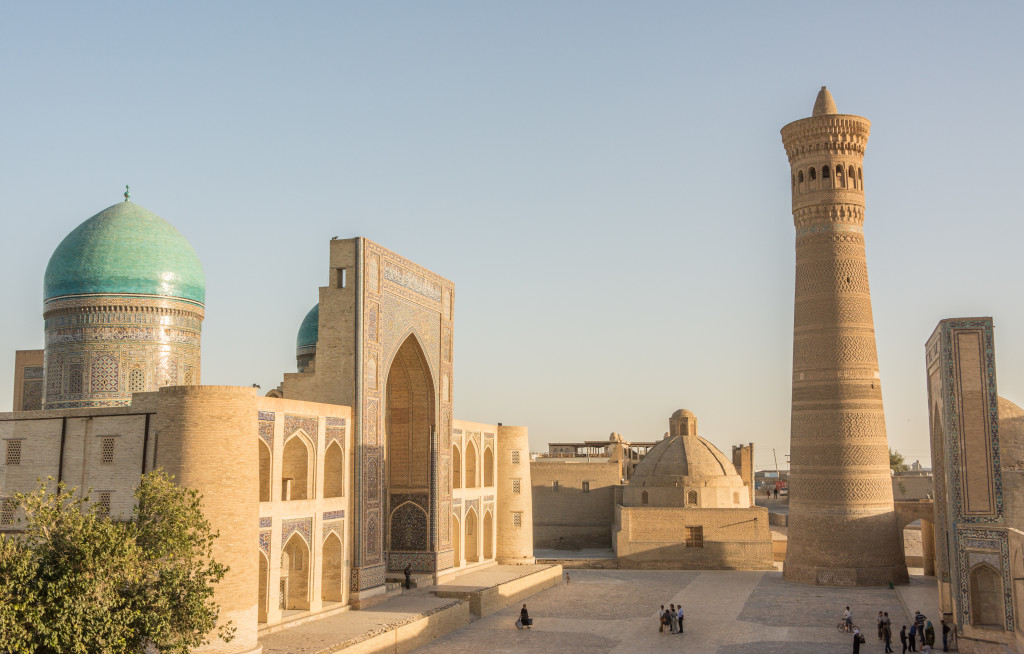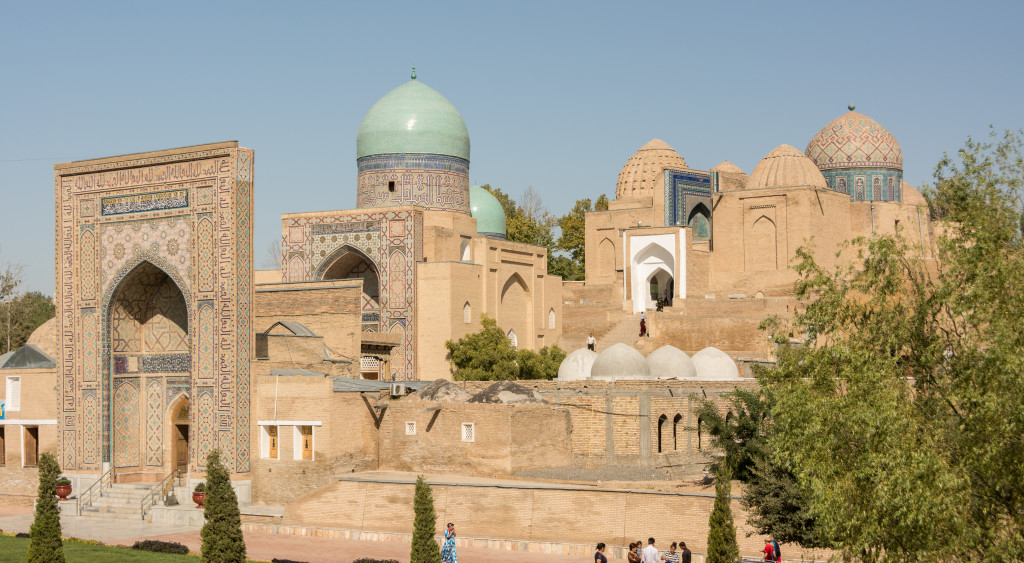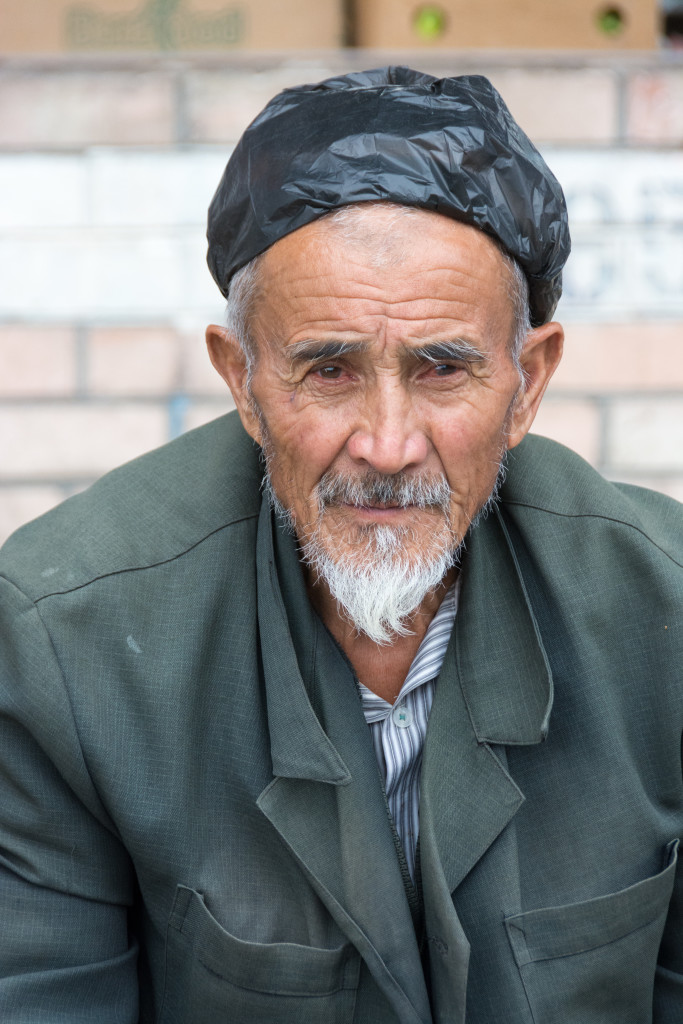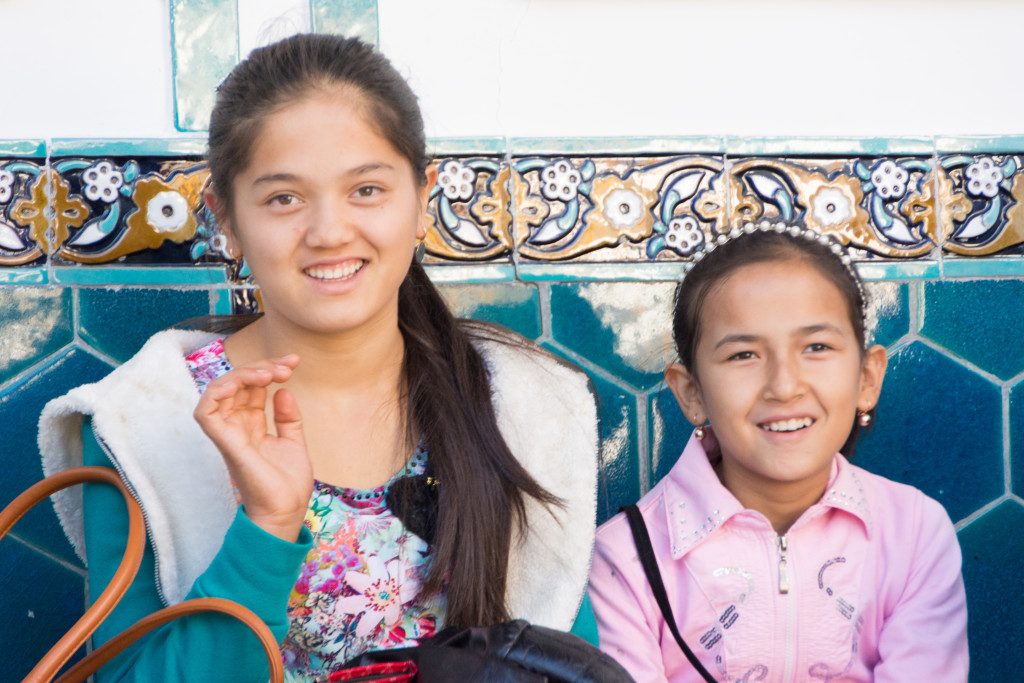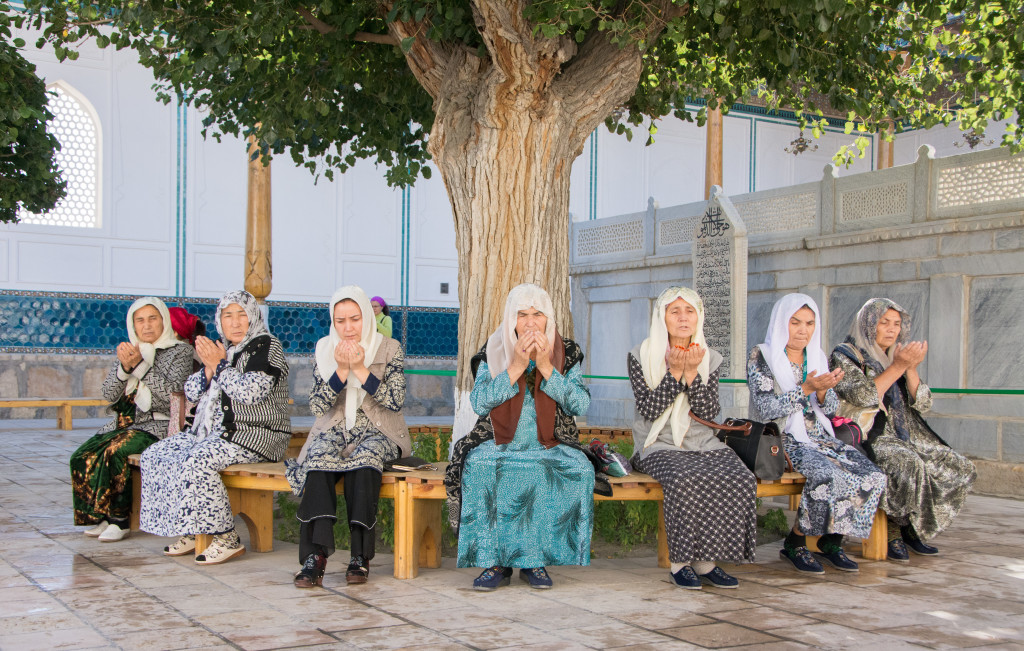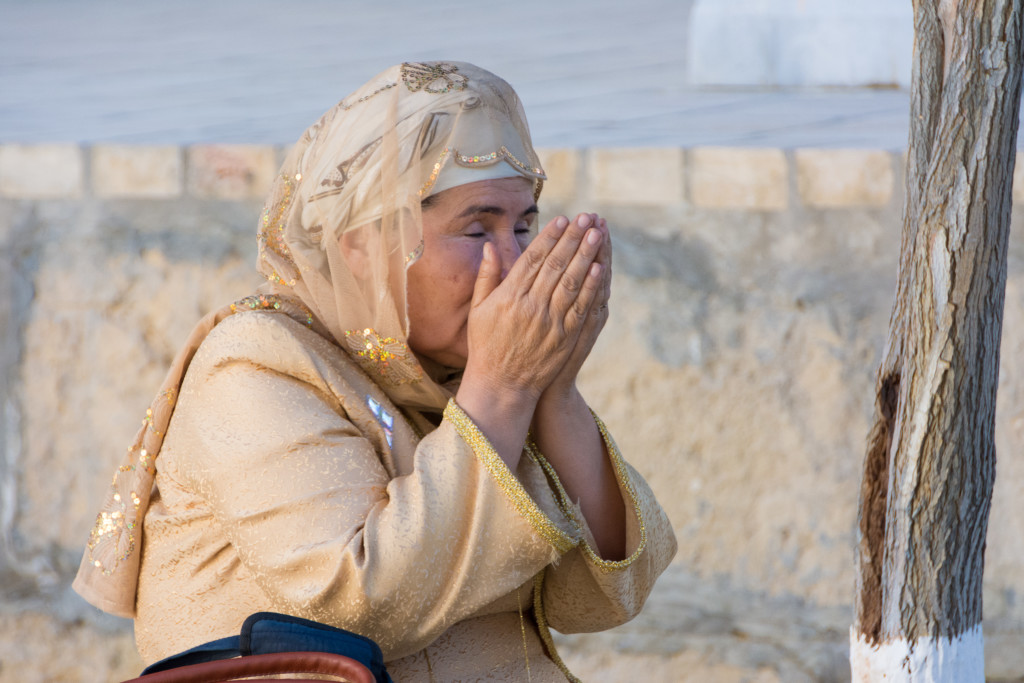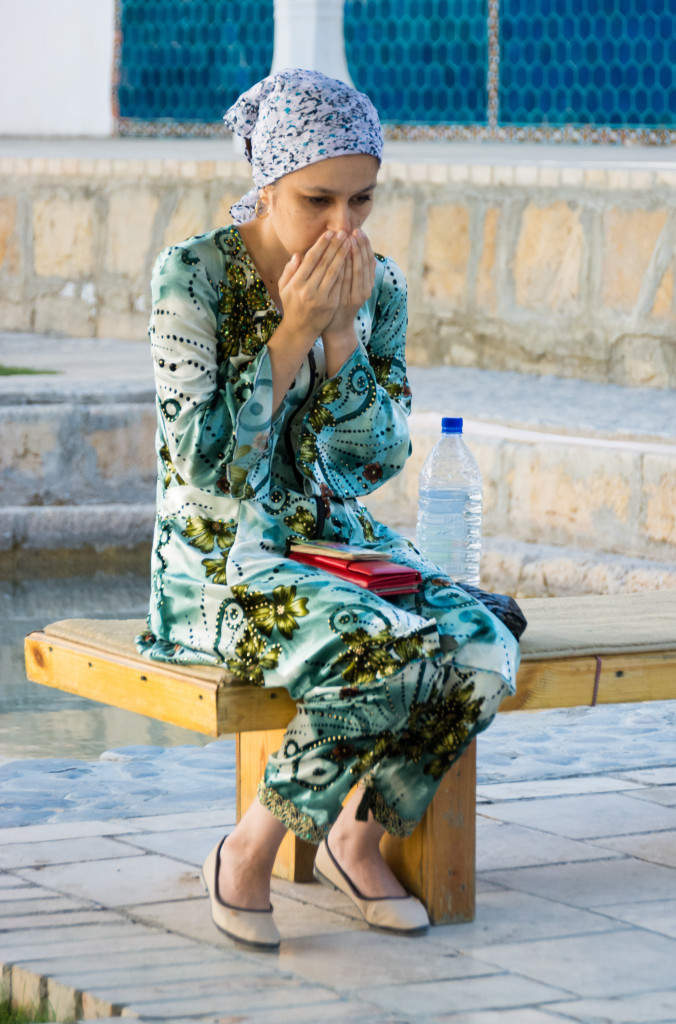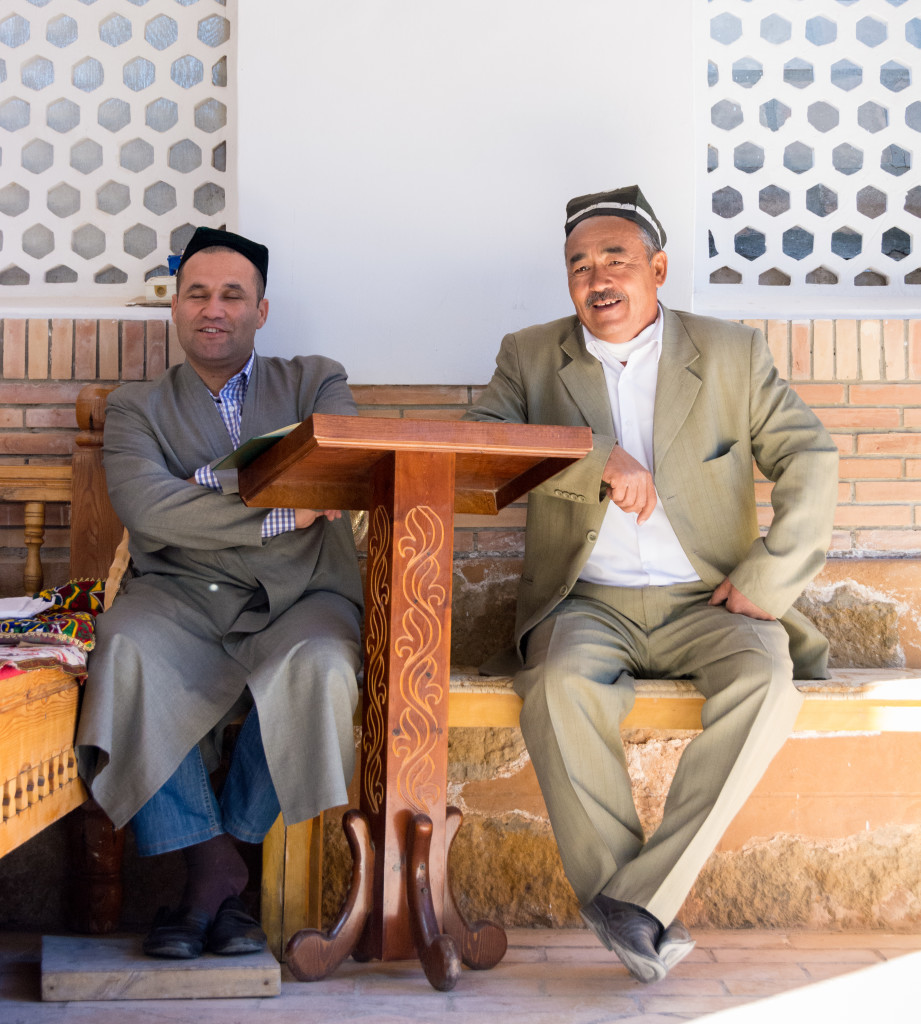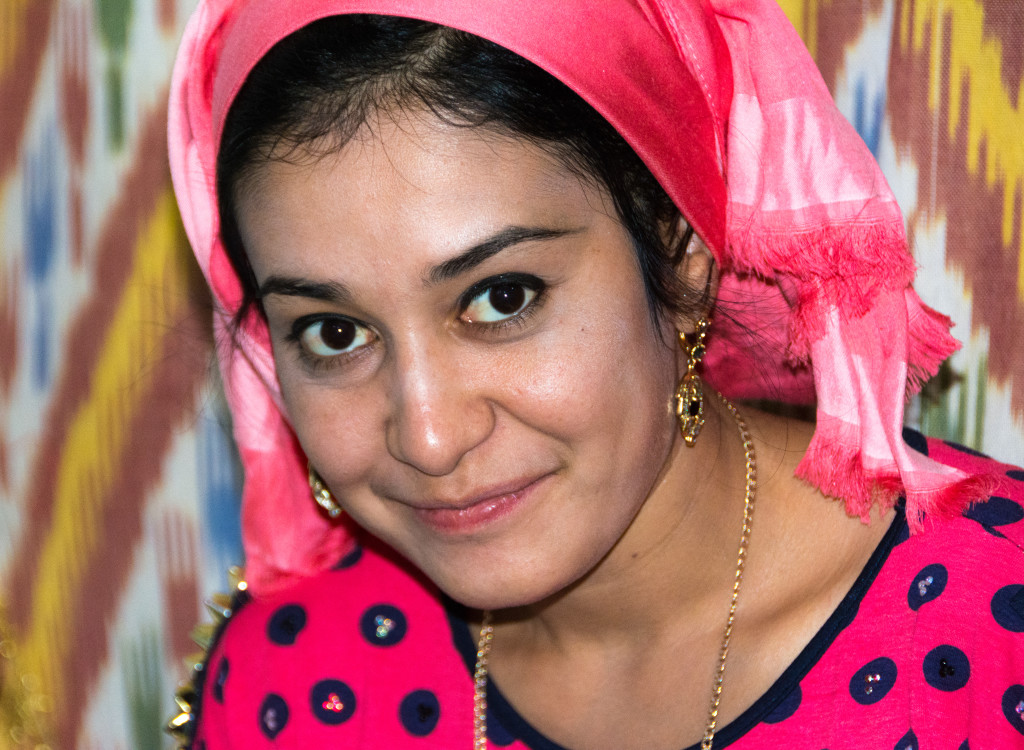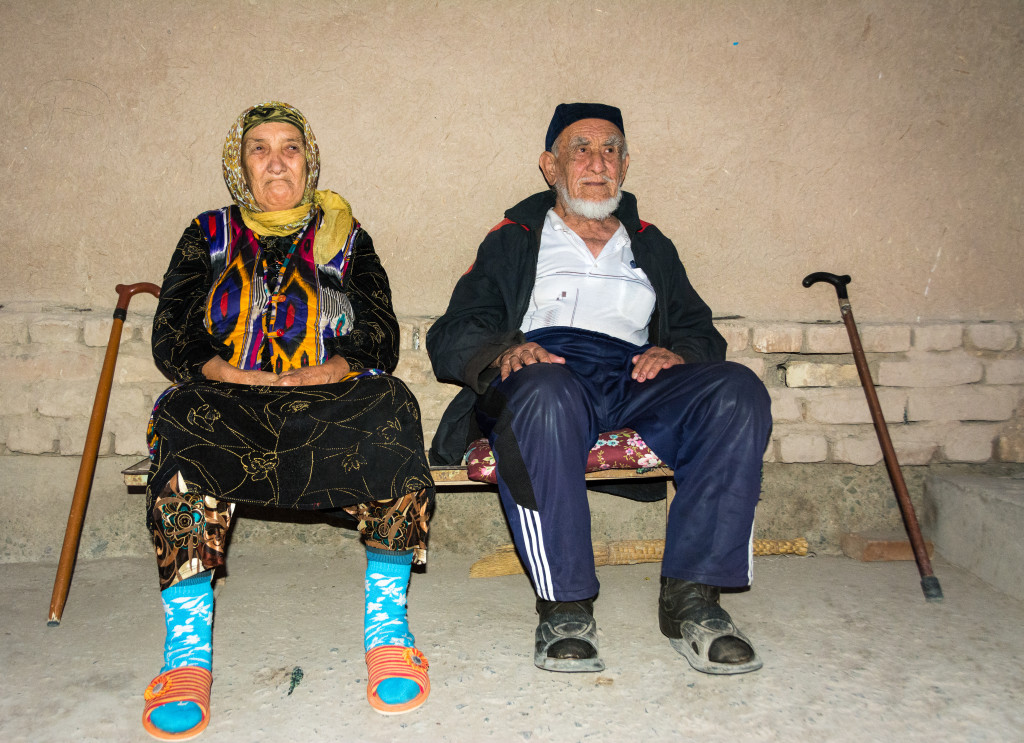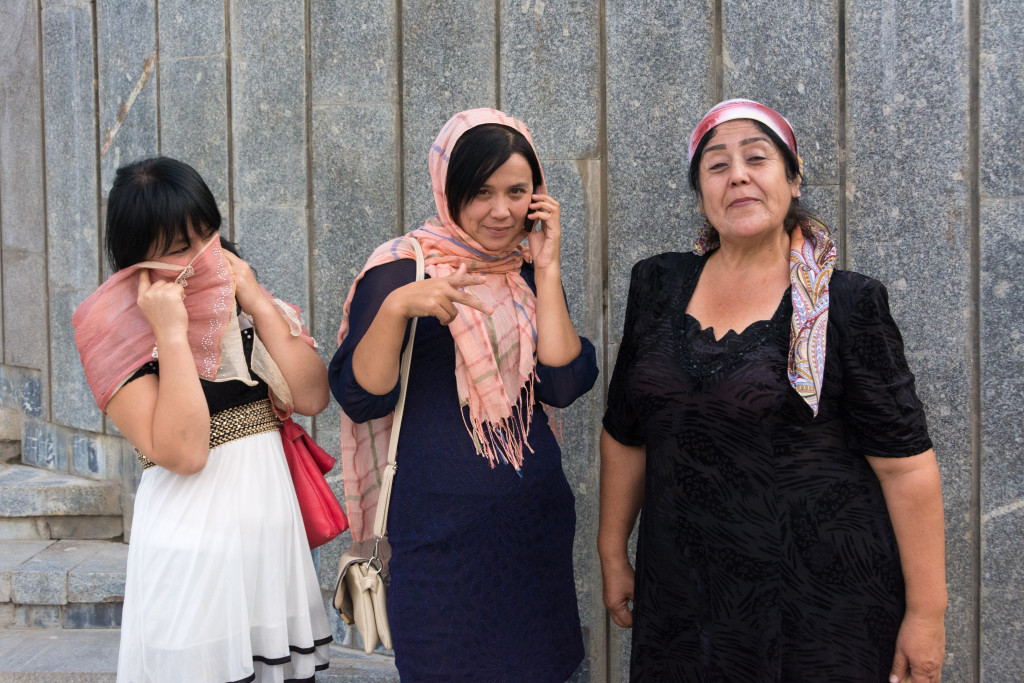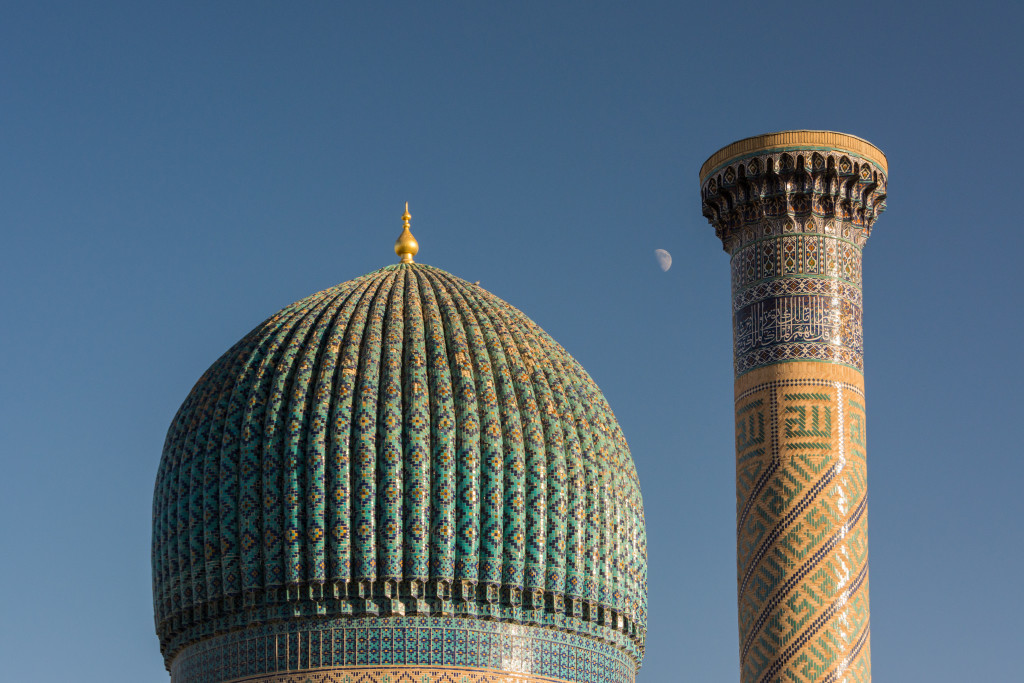The facts about Uzbekistan (written by Douglas Parks)*
1. Without question, Uzbekistan is the heart and soul of the Silk Road in Central Asia both historically and culturally. With its ancient towns of Samarkand, Bukhara, and Khiva, one is exposed to classic Islamic architecture of turquoise domed mosques, towering minarets and wonderful bazaars.
2. With 31.5 million people, the country (the size of California) is presented as a presidential republic that is officially democratic, secular and constitutional. The reality is that it is a stable yet very repressive dictatorship with a strong police and military presence (65,000 in the army), but it is quite safe to travel within its borders at present.
3. Tashkent, the capitol with three million inhabitants, lies only 30 miles from the Russian border. It was destroyed in 1966 by a massive earthquake but is now mostly rebuilt. It was the 4th largest city in the former USSR after Moscow, St. Petersburg and Kiev, about the size of Chicago. The city is still very Russian looking with wide boulevards, Russian apartments, Russian trolleys and a beautiful subway. Mosques and madrasses are no longer banned.
4. The Grand Mufti lives in Tashkent. Every week he writes the sermon that is read in mosques throughout Uzbekistan. This is one way the country cuts down on Islamic radicalism. One of the three oldest Korans in existence within the entire world (645 A.D.) is housed in the home of the Grand Mufti. The other two are in Mecca and Medina, Saudi Arabia.
5. Population here: 81% Uzbek, 6% Russian, 4% Tajik, 3% Kazak, all others 6%.
6. Uzbekistan is known for its beautiful Egyptian type cotton. It is also the world’s 4th largest producer of gold, 10th in copper, 11th in natural gas and 12th in uranium!
7. The lone president of Uzbekistan since the collapse of the USSR is Islam Karimov. He has the largest military in all the stans, and security is very tight. Border guards are always checking for drugs coming in from Afghanistan and the Uzbekistan border guards even confiscate sleeping pills. They are also on the lookout for Uzbeks that have joined ISIS abroad. This is a very isolationist country without any close friends in the stans. China appears to be their closest partner now.
8. Foods: Flat bread and noodles are very important. Mutton is the most popular meat. Kebabs are the most popular preparation. The signature dish of Uzbekistan is Plov, which is rice, meat, grated carrots and onions. Green tea (kok choy) is the national hot beverage. Decent beer and Vodka are plentiful. Muslims in Uzbekistan will tell you that they are a “different kind of Muslim” calling themselves the “pork eating, vodka drinking kind”.
9. The number one sport is soccer, followed by tennis and chess. Baseball and basketball are starting to become more popular.
10. Uzbekistan boasts some of the Islamic world’s greatest architecture. Samarkand, Bukara and Khiva are the unmistakable standouts with epic buildings. Great, but extremely cruel warrior Tamberlane, who proclaimed himself “The only King on Earth,” has his mausoleum in Samarkand. This area is the center of the silk Road. Here are the footprints of Alexander the Great and Genghas Khan. The city is an incredible 2,750 years old – one of the oldest in the world. Samarkand is a city of great contrasts: a modern city with Russian buildings and universities and many cars balanced against some of the most famous ancient monuments in the world like the 17th century Registran. This huge town square is where festivities and executions happened. There are three great madrasses and mosques here built between the 15th and 17th century by artisans from many countries.
11. Bukhara is the second major city on the Silk Road. It is 2,500 years old and was founded by the Chinese. Established as an oasis city along the Silk Route, Bukhara has a current population of 250,000 people. The Jewish population of Bukhara in the 1930s numbered over 200,000 and Jews have lived on the Road for 2,000 years but today only 50 Jewish families remain. A brief history of Bukhara: In 709, Bukhara was conquered by the Arabs. It was subsequently conquered successively by Genghis Khan and then around 1220 by Tamerlane. In 1920, the Russians bombed Bukhara with much damage and captured the city. Under Soviet rule religion was banned but prior to Russian occupation and rule over 290 mosques operated within the city.
12. It is a 10 hour drive from Bukhara through the Red Sand Desert to reach the third major Silk Road oasis city of Khiva, with its population of 40,000. It is a beautiful city surrounded by an ancient wall that many enemies tried to overtake. Inside are mosques, schools, museums and wonderful bazaars where you can buy silk scarves or expensive hand woven rugs. There are also several palaces and the main one where the reigning king kept up to four wives and 40 concubines (16-19 years old). Typically the wives came from important families. Some of the concubines came as gifts, some of their own free will seeking the comfort of the king’s wealth. It was rumored that some of the kings kept kidnapped girls. Poisoning was a very common occurrence among the wives and concubines. Stories abound that the wives often poisoned the wife who was favored by the king, and that more than once they actually killed the king.
* Doug Parks is a serious traveler, teacher and adventurer who has journeyed to 170 countries over the course of his life to this point, including trips to Europe, South America and Middle Asia with Pablo.
